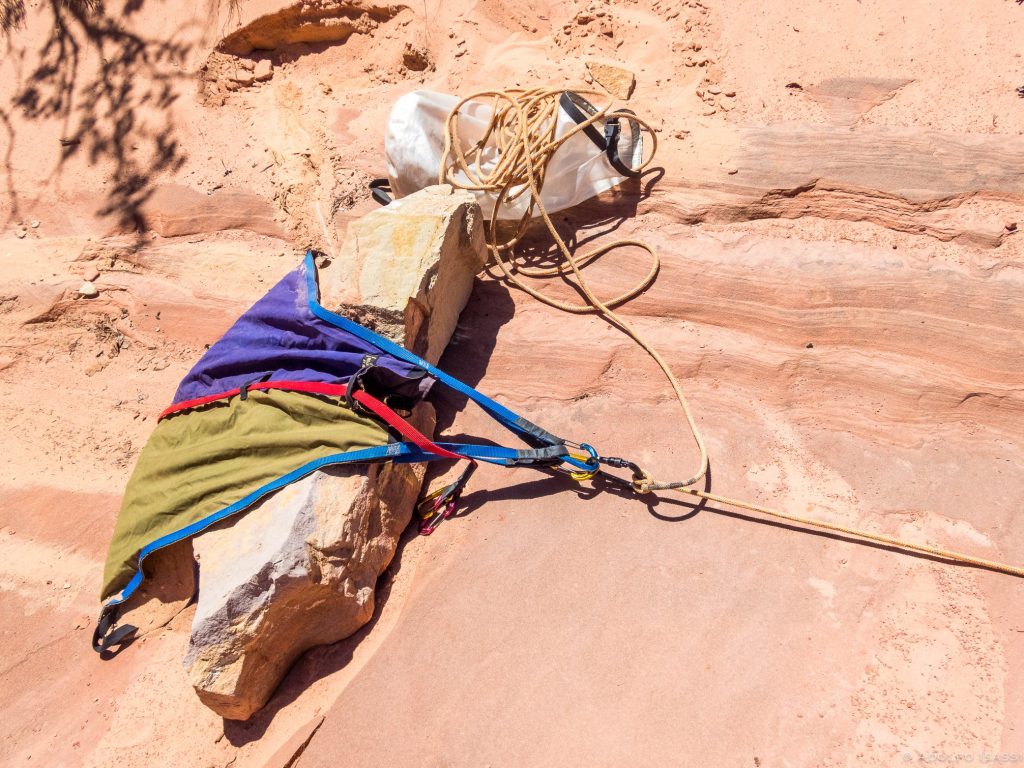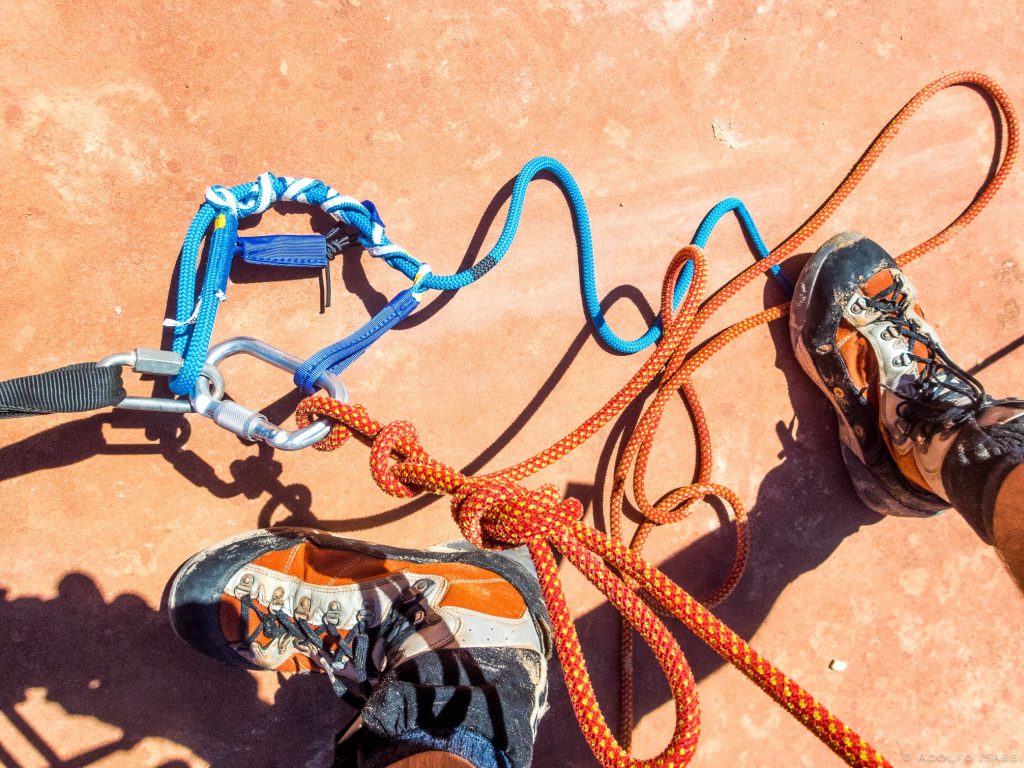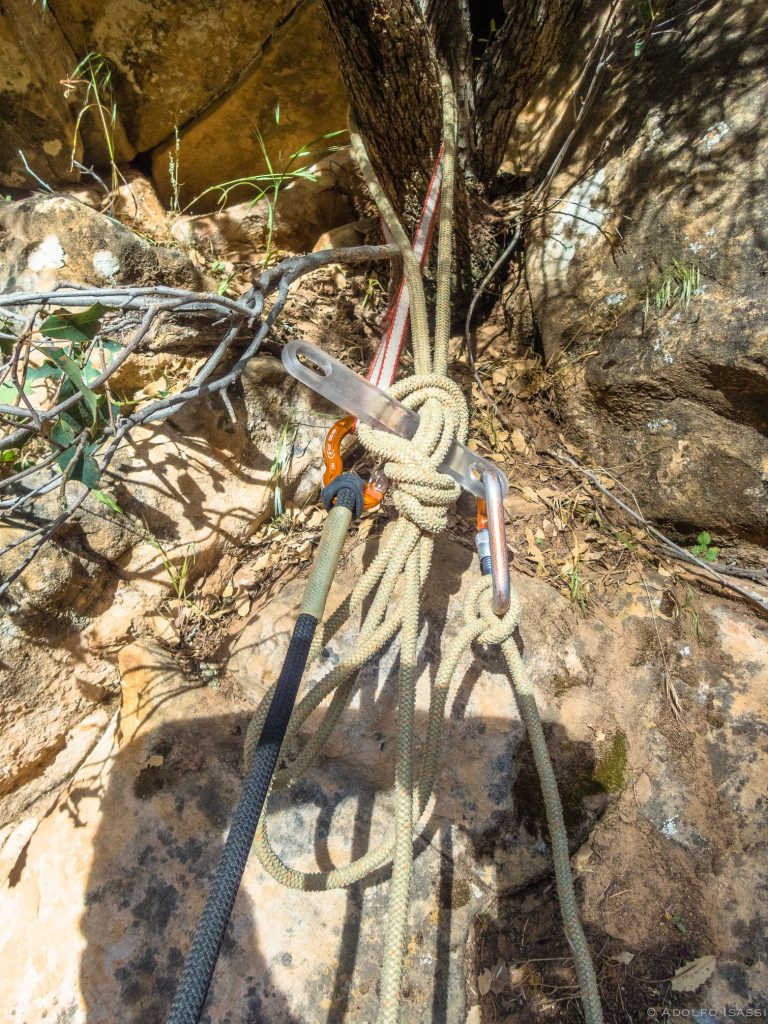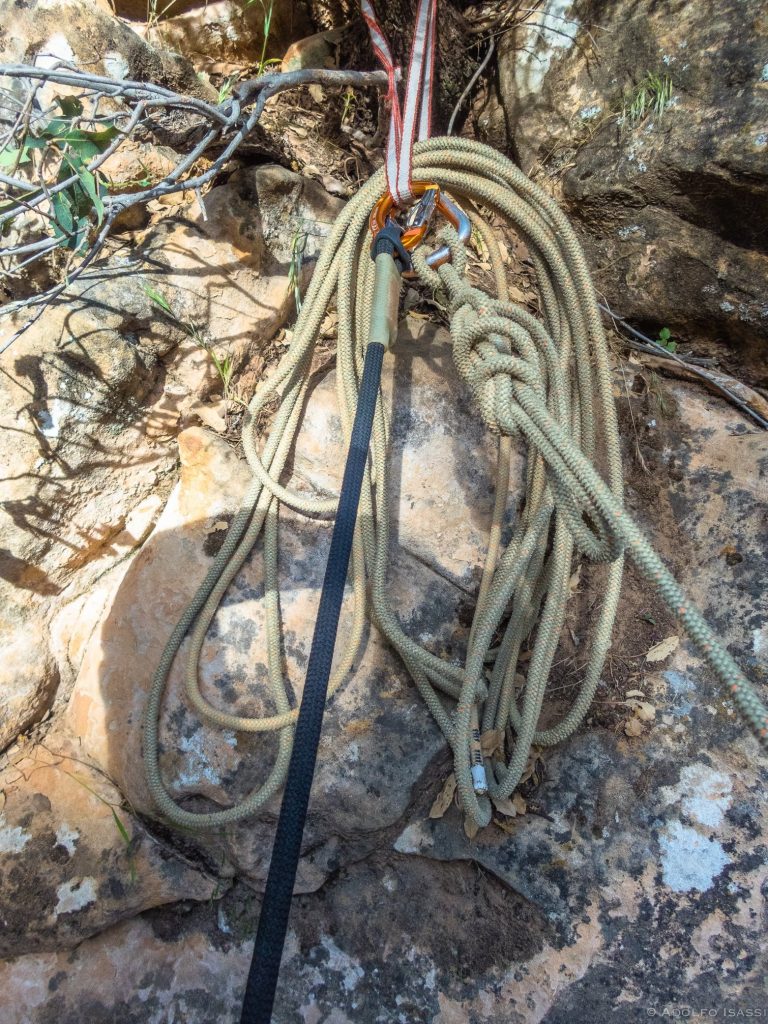Sooner or later, canyoneers will come across this particular area of rigging: Retrievable rigging
Depending on the country or region of the world, it can be referred to as:
– Retrievable Rigging/Retrievable Anchors
– Ghosting- Transient Rigging/Transient Anchors
– Métodos de Fortuna (Lucky Methods)
There is a surprisingly long list of methods under this category:
- Toggle Sticks
- CEM Knots
- Macrame Knots
- Retrievable Sling & Rings (idea from arborists)
- Sand Traps
- Water Traps
- Bungees & Hooks
- Beal Escaper (name brand)
All these methods have slightly different purposes. But all of them, at their core, are tools to deal with either:
- a lack of anchor opportunities (There are no rocks or trees nearby….)
- a lack of anchoring material (Team ran out of bolts, drill battery, webbing, cord, rappel rings….)
- accidents (Drill got damaged by water, Bolts have been blown or damaged by high flow…)
As you can see, these are appealing reasons to use these methods for first descents and for routes that are seldom descended and anchor conditions are unknown. In both cases, all team members should be skilled in self-rescue, soft-starts, edge management, and risk management.
But all these methods have 2 distinct characteristics that makes them not appealing for commercial guiding where the essence of the activity is to manage risks for clients with little to no canyoneering experience:
- These methods are static, they are not releasable.
- Some of them are “tails up” rigging. This is the kind of rigging where the bulk of your rope is down at the bottom of the rappel; therefore, you do not have “rescue” rope available, so you are forced to keep extra rescue rope at the top, and know how to convert “Tails Up to Lower”.
So, why would a professional guide be compelled to use these methods?
As a professional guide, if you want to use these methods with clients, you will need to combine these methods with releasable rigging and do it in an efficient way. Once you have confidence in a ghosting technique, and you know how to combine it with releasable rigging, here are some situations for which you might use ghosting techniques:
- You may be exploring and opening new routes for guiding.
- You may want to avoid placing a visible first anchor on a canyon. In some popular areas, visible anchors are a temptation for tourists to drop into a place where they will be in trouble.
- In some areas, people steal hangers and damage bolts that are within reach or very visible. You may want to ghost locations like these.
- You are in a canyon where ropes are prone to get stuck easily. If you have a small party, it may be unfeasible to carry 3 times the rope length of the longest rappel. You may want to carry 2 ropes + a ghosting technique to deal with stuck rope risks and spare your reserve rope to finish the canyon in case of trouble.
- You may be guiding in an area where bolting is prohibited and natural anchor locations result in rock scarring or stuck ropes.
You can use these techniques in a professional way while keeping unnecessary risks to a minimum for your clients. If you guide for a company, check the company’s operation standards to see if these techniques are suitable.
In future blog entries we will cover how to combine some retrievable rigging and some transient anchors with releasable rigging.
Check the Risk Assessment Flow for Toggle Rigging at the bottom of this post.

Sand Trap
You can use a Sand Trap with releasable rigging, like with a MMO and set lenght for your team. Picture with a ‘clove’, that got turned into a MMO.
Beal Escaper
Companies have jumped into the ghosting fray with their own solutions.


Toggle
A toggle stick holding a mid-rope point after team went down on a MMO
MMO with reserve rope
MMO on a HMS and Sling. Reserve rope for lowering stowed in the sling. After this, MMO is converted to a Toggle Stick


Munter-Mule-Overhand
CEM Knot
MMO to CEM sequence. Put your team down with a MMO on a sling. Then convert MMO to CEM knot for last person.
As guides we all know we need to have a contingency plan in mind in case of something not going as planned
Here is a risk assessment flow for a canyoneering team. The particular rappel conditions and team’s skill level will determine if Ghosting is a good idea


Nice post, Adolfo.
As guides we always need to have a plan in mind — just in case. As you stated, retrievable systems have their place in canyoneering in a number of scenarios. Those scenarios often relate to the rope pull at the end, so there is rarely a good reason for a guide to forego using releasable contingency systems and/or top rope belays for clients,
Looking forward to more blog posts from you.